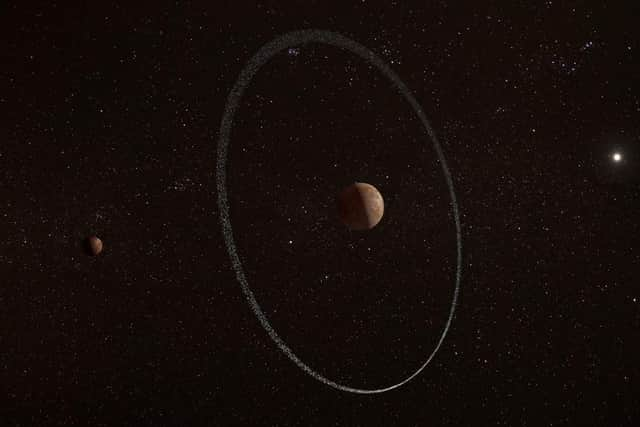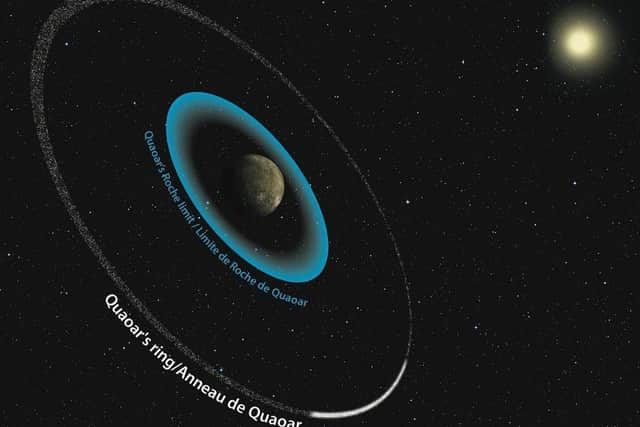Scientists from Sheffield discover new ring system around dwarf planet on edge of solar system
The rings – which are usually composed of dust and rocky material - surround a planet, named Quaoar, which orbits the Sun beyond Neptune.
Ring systems are relatively rare - as well as the well-known rings around the giant planets Saturn, Jupiter, Uranus and Neptune, only two other minor planets possess rings - Chariklo and Haumea.
Advertisement
Hide AdAdvertisement
Hide AdThe discovery was made by an international team of astronomers using an extremely sensitive high-speed camera developed by scientists at the University of Sheffield which is mounted on the world’s largest optical telescope, the Gran Telescopio Canarias on La Palma.


The rings are too small and faint to see directly in an image.
Instead, the researchers made their discovery by observing an occultation, when the light from a background star was blocked by Quaoar as it orbits the Sun.
The event lasted less than a minute, but was unexpectedly preceded and followed by two dips in light, indicative of a ring system around Quaoar.
Advertisement
Hide AdAdvertisement
Hide AdAll previously known ring systems are able to survive because they orbit close to the parent body, so that tidal forces prevent the ring material from accreting and forming moons.


What makes the system around Quaoar remarkable is that it lies at a distance of over seven planetary radii - twice as far out as what was previously thought to be the maximum radius according to the so-called "Roche limit”, which is the outer limit of where ring systems were thought to be able to survive.
In contrast the main rings around Saturn lie within three planetary radii.
Professor Vik Dhillon, co-author of the study from the University of Sheffield’s Department of Physics and Astronomy, said: “It was unexpected to discover this new ring system in our Solar System, and it was doubly unexpected to find the rings so far out from Quaoar, challenging our previous notions of how such rings form.
“Everyone learns about Saturn's magnificent rings when they're a child, so hopefully this new finding will provide further insight into how they came to be.”
